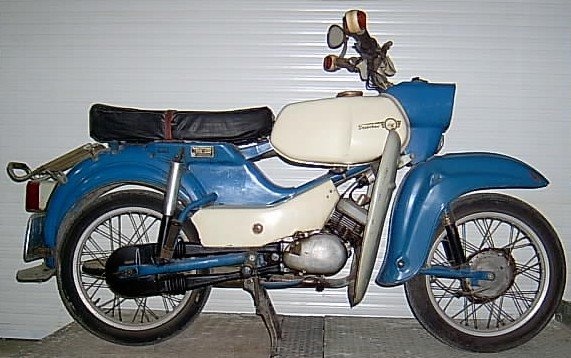Der SR 4-3 "Sperber" wurde in Suhl ebenfalls als Serienmodell produziert und erhielt als Nachfolger des "Star" einen besseren Motor.
Er hatte ebenfalls einen Zentralrohr -Schalenrahmen. Sein Leergewicht betrug 80 kg, die Reifengröße vorn 2,75 - 20 und hinten: 2,75 -20.
Das Fahrzeug war mit Sitzbank für zwei Personen ausgestattet und wurde generell in der Farbkombination dunkelblau - beige ausgeliefert.
Durch die erhöhte Leistung (4,6 PS, Höchstgeschwindigkeit 75 km/h) wurde der "Sperber" bereits als Motorrad eingestuft. Da aber gleichzeitig mit seinerSerienherstellung die Motorradproduktion der ES-Reihe in Zschopau angelaufen war, wurde der "Sperber" nicht allzu oft verkauft, zumal er nicht gerade wie ein Motorrad aussah. Zwischen 1966 und 1972 wurden 80.000 Fahrzeuge ausgeliefert (Verkaufspreis: 1550,00 Mark).
Dennoch wurde die Baureihe ab 1971 mit dem SR 4-4, dem "Habicht", weiterentwickelt.
en

